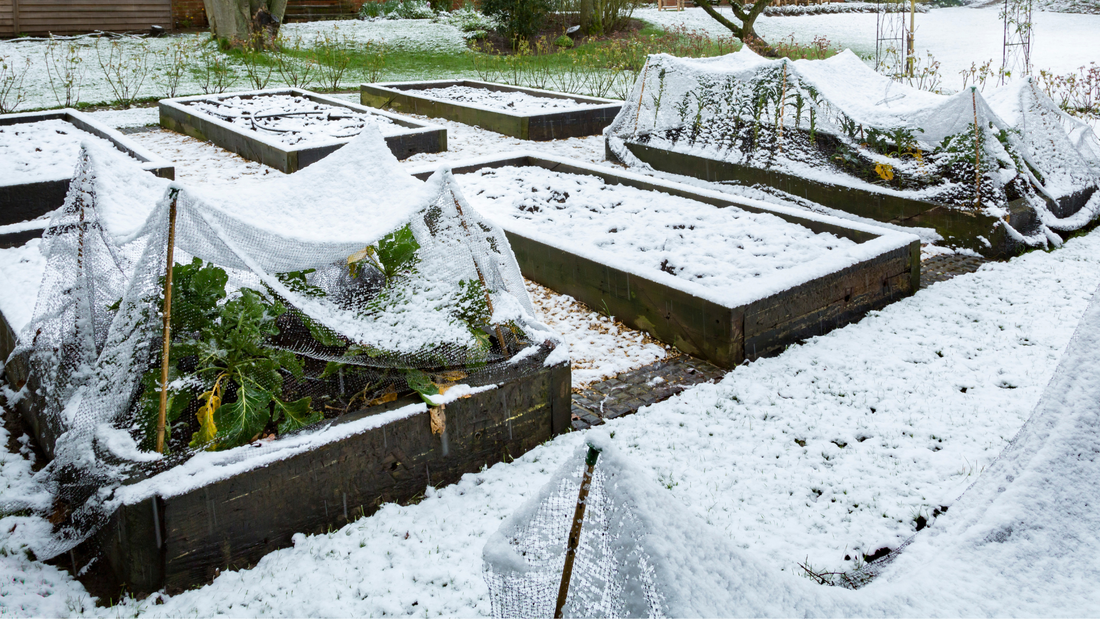
Ultimate Guide to Winter Vegetable Gardening
Share
Get ready to embark on a thrilling journey of winter vegetable gardening. Where chilly temperatures don't mean waving goodbye to your green thumb dreams! In this blog, we're diving into the essentials of cultivating a vibrant winter garden that defies the frosty odds. Wondering when to plant those hardy veggies or how to give them the cozy care they deserve? We've got you covered with practical tips for a bountiful winter harvest. From soil prep to choosing the coolest plant varieties. Let us make your winter gardening journey not just successful but downright enjoyable.
Get your smart self stirring mug ready and join us as we unlock the door to a world where winter and veggies coexist in harmony.
Understanding the Basics of Vegetable Gardening in Winter
Winter vegetable gardening is a rewarding endeavor that allows enthusiasts to extend their gardening season, grow vegetables and enjoy fresh produce even in winter long months. While many may associate gardening with the warmth of spring and summer, with the right knowledge and preparations, winter gardening can be just as fruitful.
Cold weather gardening presents a unique set of challenges, but with the right mindset, it can be a fulfilling and productive experience. Understanding the specific needs of and adapting your gardening practices accordingly is the first step towards winter growing success.

How to Prepare Your Winter Vegetable Garden
Choose the Right Vegetables:
Select cold hardy vegetables that thrive in colder temperatures. Consider options like kale, Brussels sprouts, broccoli, carrots, and squash. Check your local climate to determine the best varieties for your region. Choose vegetables that are perfect for light frosts or cold-tolerant ones.
Best Vegetables to Plant in Winter
Not all vegetables are ideal to grow in winter conditions, so it's crucial to choose varieties known for their extreme cold and weather resistance.
Leafy Greens
Brussels Sprouts

Broccoli
Cauliflower
Cauliflower is an ideal addition to winter gardens, thriving in cool temperatures and even tolerating light frost. This cruciferous vegetable can be grown during the winter months, providing a fresh and nutritious harvest. To ensure successful cultivation, consider using protective covers such as row cover or frost blankets, which shield the cauliflower plants from the chillier elements, allowing them to flourish despite the winter conditions.
Winter Squash
Bulbs:
Plan Your Garden Layout:
Organize your garden beds to make the most of available sunlight. Place taller crops on the northern side of the garden to avoid shading shorter plants. Consider companion planting to enhance growth and deter pests.
Soil Preparation for Cold Success
The foundation of a successful winter garden lies in soil preparation. Enhance your soil with organic matter, such as compost, to improve drainage and provide essential nutrients. Well-draining soil prevents waterlogging, a common issue in winter that can harm plant roots.

Mulching for Temperature Regulation
Mulching is a key practice in winter gardening. A thick layer of mulch helps regulate soil temperature, providing insulation for plant roots against extreme cold. Additionally, mulch helps retain moisture, reducing the risk of dehydration during dry winter spells.
Proper Watering:
Proper watering in is crucial for maintaining plant health despite the cooler temperatures. While plants experience reduced water loss through evaporation it's essential to monitor soil moisture levels regularly. Water plants deeply but less frequently, allowing the soil to dry out slightly between watering to prevent waterlogged conditions that can lead to root rot during the dormant season.
Water less ! Know that winter usually means less watering. Plants grow a little more slowly and there's often winter rains, so be careful to avoid underwatering. Adjusting your watering routine to match the specific needs of winter conditions helps ensure the well-being of your plants throughout the colder months.
Protect from Frost:
Be prepared to protect your plants from frost. Protecting your vegetables from harsh weather is crucial. Consider using a cold frame, row covers or cloches for added insulation. These structures create a microclimate that supports plant growth while safeguarding against the challenges of winter weather.
Succession Planting for Continuous Harvest
Implementing succession planting ensures a continuous supply of fresh produce throughout the winter. By staggering the planting of certain crops, you can extend your harvest window and enjoy a diverse array of vegetables over an extended period of cold season.
Understanding Winter Planting Windows
Timing is everything in cold weather gardening. Start by calculating the average first frost date in your region, then work backward to determine the ideal planting dates for winter crops. Planting too early or too late can compromise the success of growing vegetables in cold weather.
When to Plant:
- Early Fall Planting (Late Summer to Early Fall): Plant winter vegetables 6-8 weeks before the first expected frost in your area. This timing allows the plants to establish themselves before colder temperatures set in, promoting better hard freezes resilience.
- Late Fall Planting: Extend your planting into late fall based on the frost dates in your region. This strategic timing ensures a steady supply of fresh produce throughout the winter months.
Caring for Your Winter Garden
Monitoring Moisture Levels
Winter's chill and cool weather can create dry conditions, so it's essential to monitor soil moisture levels. Watering during dry spells is crucial, but be cautious not to overwater, as soggy soil can lead to root rot. Use a moisture meter or simple finger test to assess the need for watering.
Pest Control in Cold Weather
While winter temperatures may deter some pests, certain insects thrive in colder conditions. Keep an eye out for pests like aphids and caterpillars, and use organic pest control methods to protect your winter vegetables without resorting to harmful chemicals.
Harvesting Your Winter Bounty
Knowing When to Harvest
Each winter vegetable has its own optimal harvest time. Pay attention to the recommended days to maturity for your chosen crops, and use visual cues such as color and size to determine when they are ready to be picked. Harvesting at the right time ensures the best flavor and nutritional content.
Storing and Preserving Harvest in Winter
Proper storage is crucial for maintaining the quality of your winter harvest. Root vegetables can be stored in a cool, dark place, while greens are best kept in the refrigerator. Consider preserving excess produce through methods like freezing or pickling to enjoy the flavors of your winter garden year-round.

Conclusion
In conclusion, growing winter vegetables doesn't need to be an icy challenge; it's an exciting opportunity to enjoy fresh produce even when the weather turns chilly. Remember to time your planting right, starting in early fall and considering late fall options based on your frost dates.
Embrace the winter gardening challenge, and you'll discover a world of flavors and freshness that extends far beyond the traditional growing season.
Share your winter gardening wisdom in the comments below. Let's cultivate a community of green thumbs and exchange tips for a flourishing cold-season harvest
Happy winter gardening!
